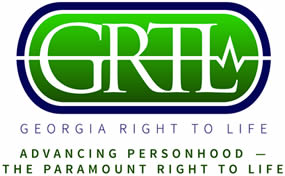 Dealing with end of life situations and the issue of organ donation are emotionally and spiritually challenging. How are these cases to be evaluated? What’s best for the individual? Should there ever be a time to consider harvesting a person’s organs?
Dealing with end of life situations and the issue of organ donation are emotionally and spiritually challenging. How are these cases to be evaluated? What’s best for the individual? Should there ever be a time to consider harvesting a person’s organs?
Imagine sitting by a loved one’s bedside, faced with the tremendous weight and responsibility of trying to answer those questions!
The first challenge is to comprehend the highly technical—and often confusing—terminology that doctors use to describe a patient’s condition.
Sadly, it’s also important to remember that organ harvesters don’t always have the best interest of the stricken patient in mind.
The following descriptions are designed to help understand the various conditions involved in these cases.
Before discussing possible answers to these questions, it’s important to understand the terminology associated with these situations.
Coma
From the Greek word “koma” meaning deep sleep. It is a state in which the cortex, or “higher brain” areas are damaged resulting in loss of consciousness, the inability to be roused, and unresponsiveness to pain, sound, touch and light.
In coma cases where the “lower brain” areas (mainly the brain “stem”) are damaged, a respirator may be required for the person to breathe.
Coma patients are graded using the “Glasgow Outcome Scale.” It involves three tests: eye opening, verbal responsiveness and motor response (movement).
The process is used to evaluate the depth of the coma, tracking the patient’s progress and possibly predicting the ultimate outcome.
Causes of a coma include:
- A stroke caused by bleeding or blood clots.
- Trauma to the brain.
- Masses or tumors forming on the brain.
- Metabolic imbalances such as high or low blood sugar, high blood calcium, or abnormalities stemming from liver or kidney failure.
- Lack of oxygen to the brain for prolonged periods of time.
- Hypothermia when the body’s temperature falls dangerously low.
Comas seldom last longer than a few weeks. Some patients recover completely and resume normal lives. Others recover, but suffer permanent disabilities. In some cases, the patient dies.
People who are unconscious for a month or longer can transition into several other states, including:
Minimally Conscious State (MCS)
While medically conscious, MCS patients only demonstrate intermittent periods of awareness of self and their environment.
They may also be able to demonstrate memory, as well as the ability to speak and gesture. However, these conditions are usually not long lasting.
In some cases, people diagnosed as suffering MCS have recovered. In one documented case, the patient recovered after 19 years.
Others may transition into one of two “vegetative states.”
Persistent/Permanent Vegetative State
This is a difficult area for families because there is no common standard for these conditions and not all hospitals and doctors agree on how to analyze such patients.
This sad reality increases the agony loved ones face when making life and death decisions.
Unlike a coma, the vegetative state is a clinical condition where the patient is occasionally awake, but generally unaware of their surroundings.
Some medical experts feel persons in such a condition cannot think, reason, relate meaningfully with the environment, recognize loved ones or feel emotions or discomfort.
Such patients can, however, cough, sneeze, scratch and even cry or smile.
As such, they have lost a decrease in brain function, not a total loss.
Others disagree, noting that some patients originally diagnosed as being in a vegetative state have improved and reversed to a minimally conscious condition.
Further, there are reported cases when patients in a minimally conscious state have recovered, even after a decade or longer.
The recovery rate is dependent on the:
- Cause of the condition.
- Amount of damage to the brain.
- Region of the brain that is damaged.
- Amount of time the person is in that condition.
Persons in PVS can suffer bodily consequences such as:
- Muscles wasting away and limbs becoming contracted or immoveable.
- Developing pneumonia.
- Experiencing recurring urinary tract infections.
- Skin breakdown and ulcers.
A person is considered to be in a “persistent vegetative state” if the condition lasts from one month to a year. After a year, they are classified as being in a “permanent vegetative state.”
Brain Death
This condition is totally different than persistent/permanent vegetative states. Brain death is generally considered the irreversible cessation of all brain functions, including the cortex and brain stem (the upper and lower portions of the brain).
Such patients cannot breathe and thus require a ventilator to supply oxygen to the blood.
Many patients are pronounced legally brain dead while the heart is still beating. In other cases, the patient is not considered dead until support machines have been turned off and the heart stops beating.
A major problem is caused by the inconsistency in the process of determining brain death. Several studies have shown that medical personnel determine brain death in different ways.
They also have differing understandings of brain death.
For example, a 1989 survey of doctors and nurses involved in organ procurement found that only 35% could correctly explain the criteria needed to establish brain death.
Even more troubling, some hospitals have no established policy on determining brain death. Further, in some cases there are reportedly different standards among doctors in the same hospital.
The next article will examine the views of organ harvesters.
(Note: This article contains a summation of medical conditions related to a variety of potential end of life issues. This information is not to be considered medical advice. Persons facing any of these situations should explore all options with trusted medical professionals).
Sources: apologeticspress.org; nejm.org; mayoclinic.org; americanhospice.org; thehastingscenter.org.
